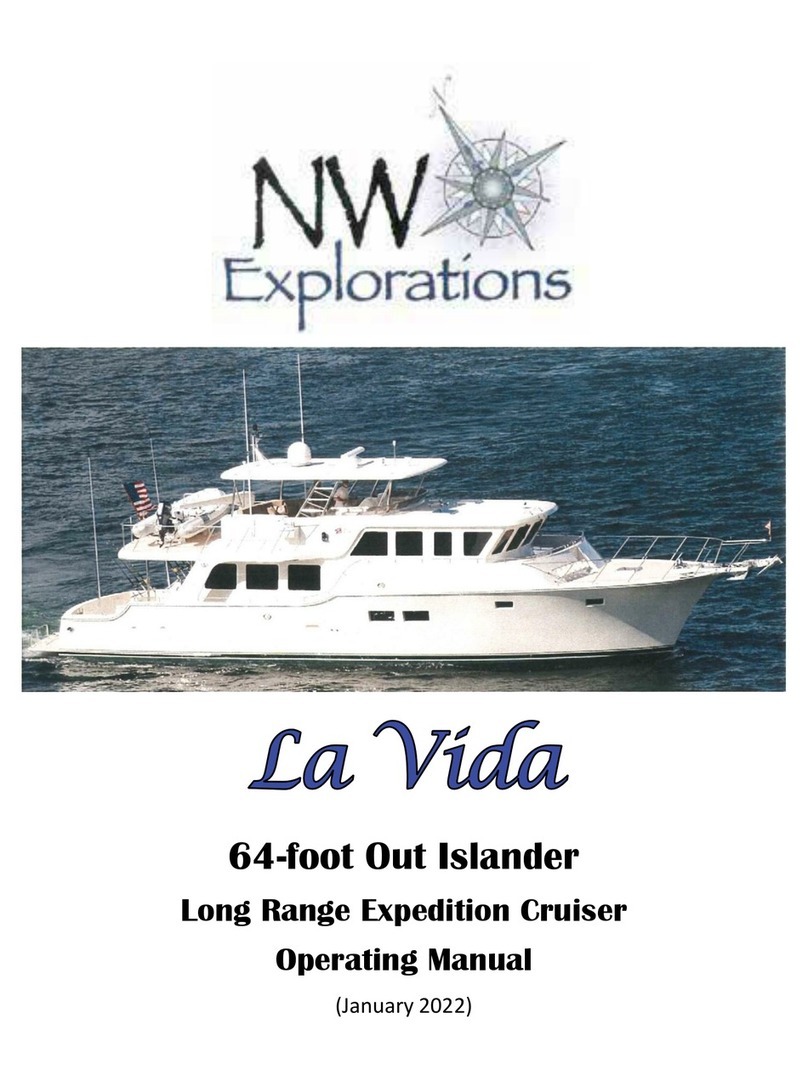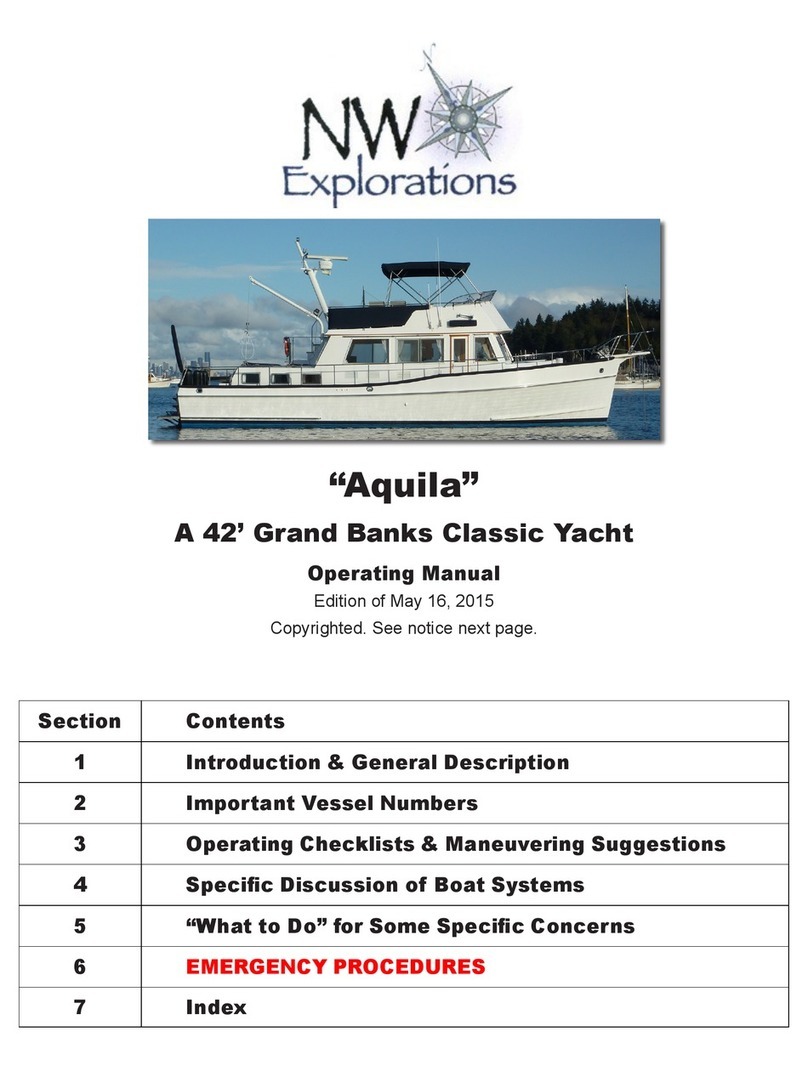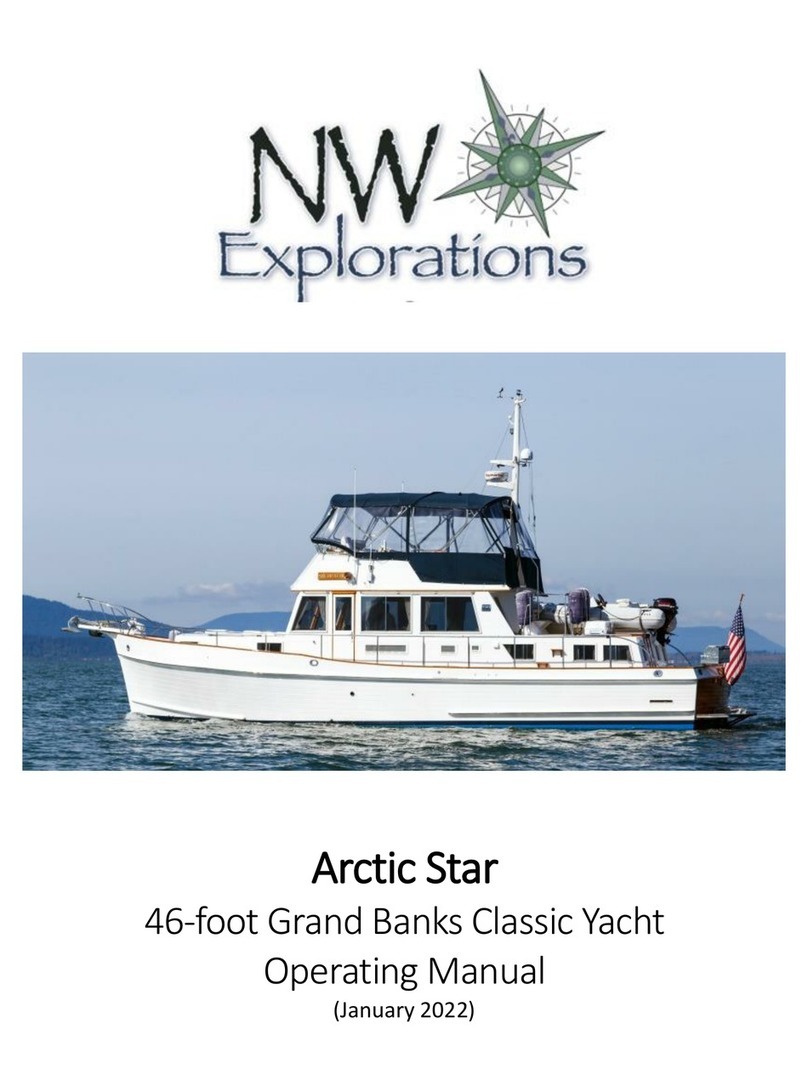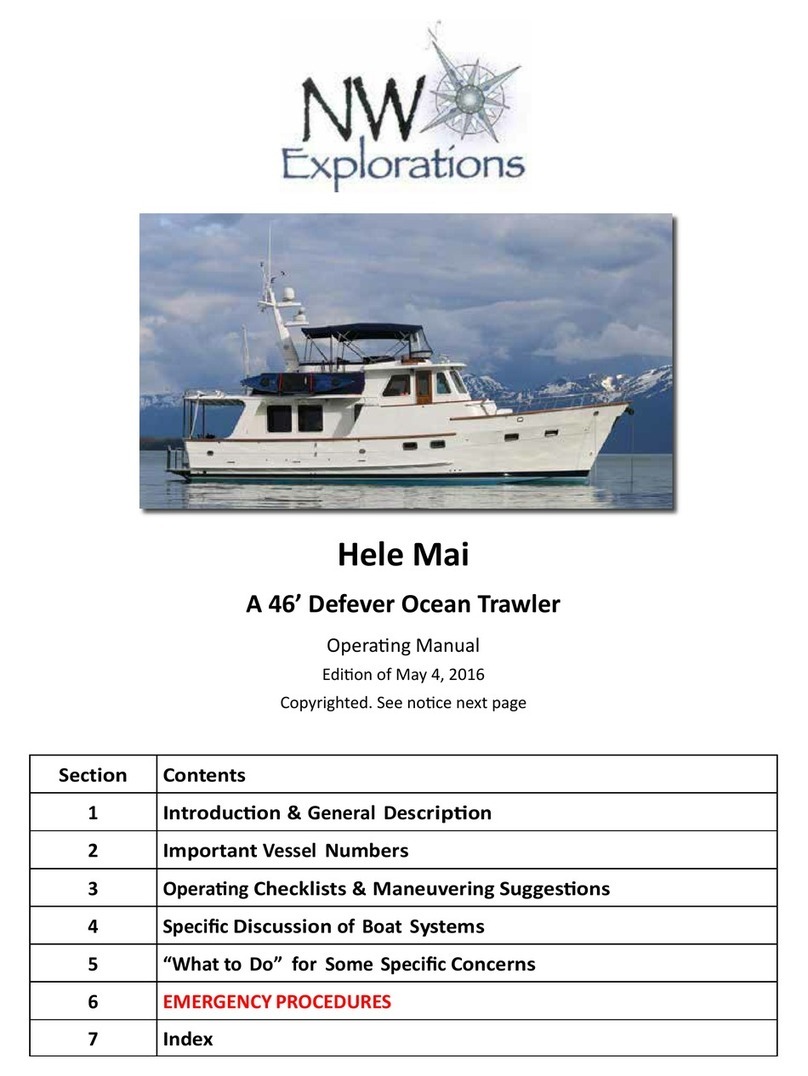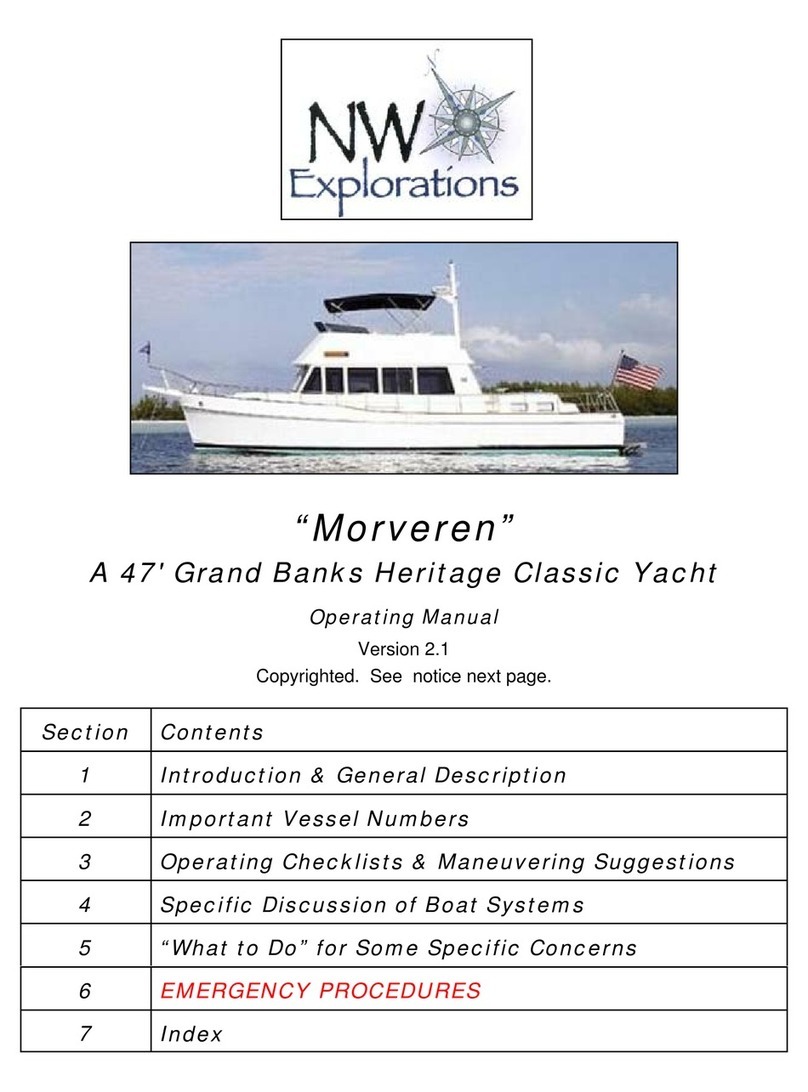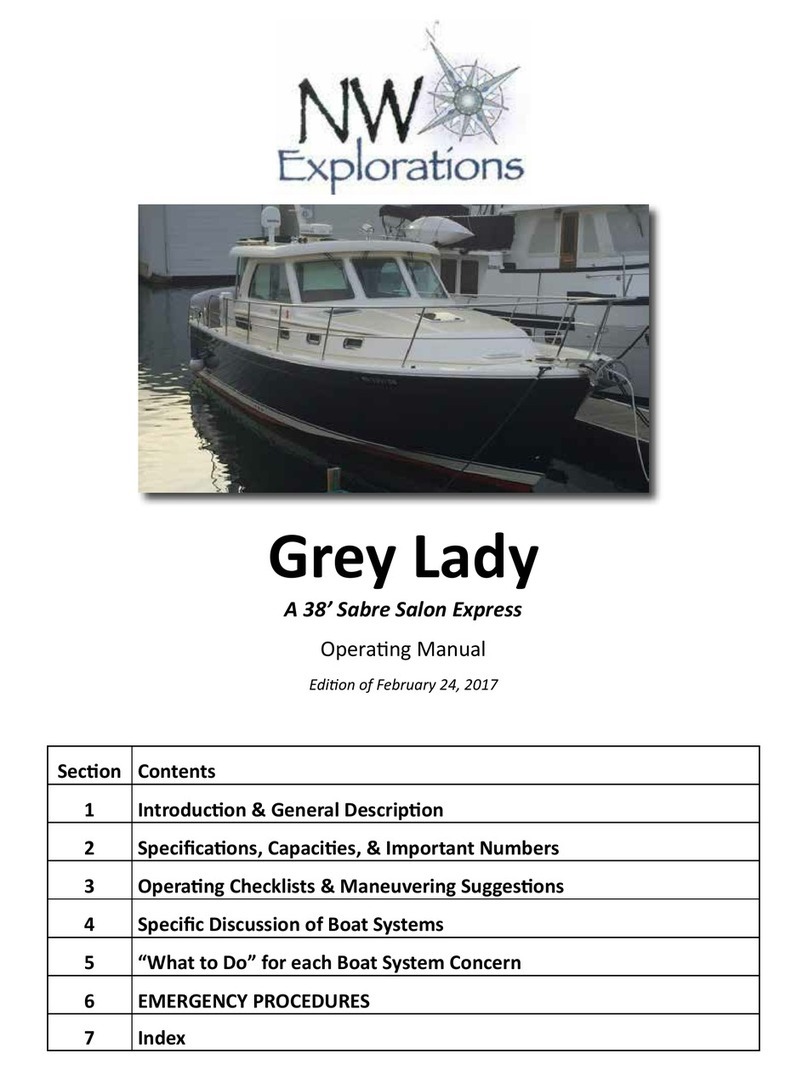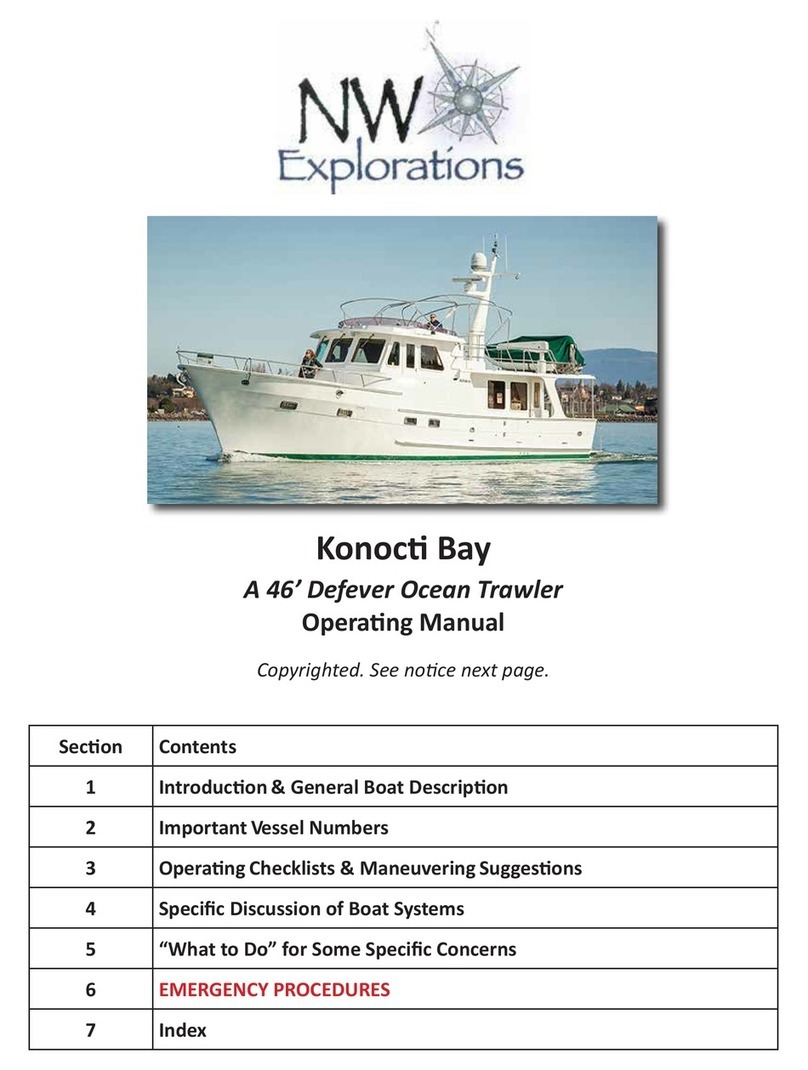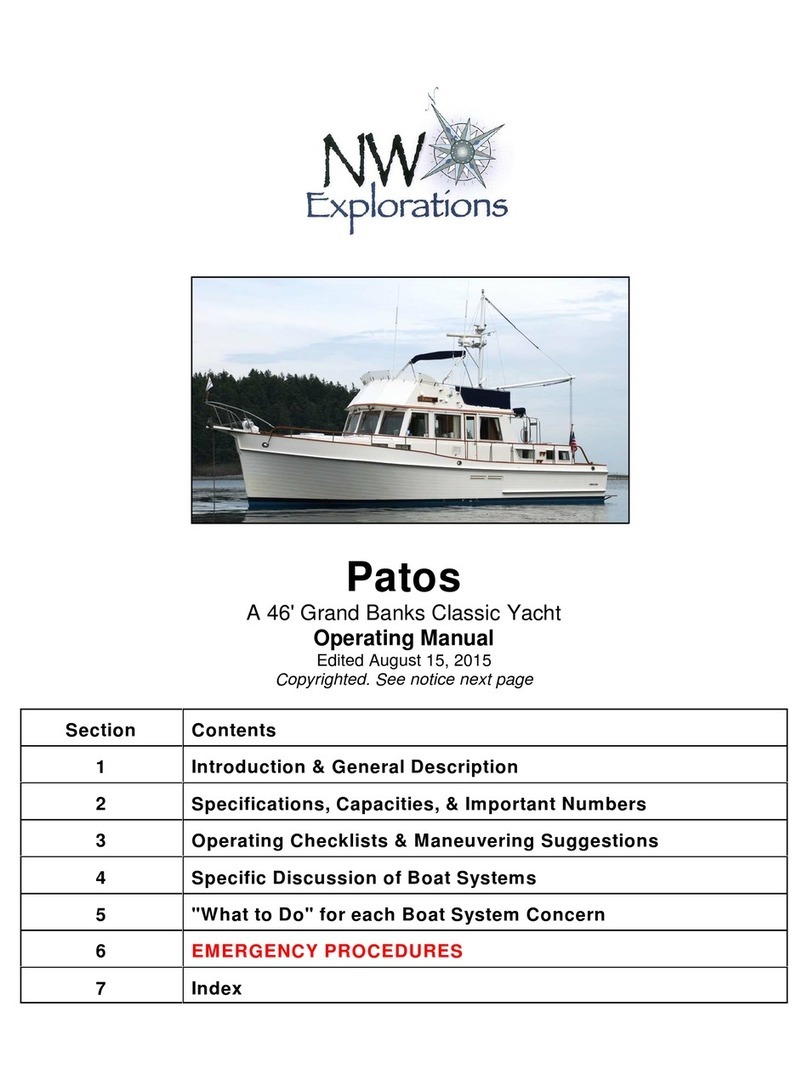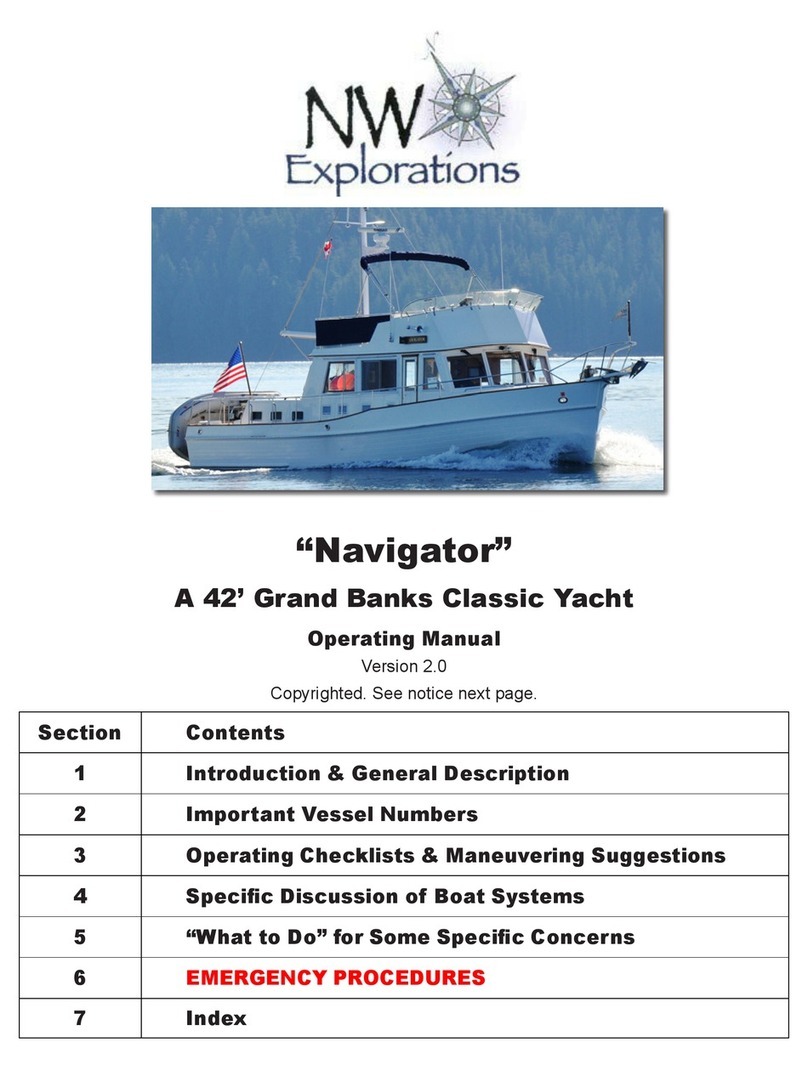
8| DISCOVERY OPERATING MANUAL NW Exploraons
Engine Room
Preferred access to the engine room
is through the oor hatch by the
entertainment center in the salon.
Engine room lighng is turned on by a
breaker in the ship’s DC power panel.
The engines are to each side, while
forward of the engines are their sea
strainer/seacocks, the sea strainer for the
refrigeraon system, the vacuum pump
for the forward head, lters for the
watermaker. On the forward bulkhead
of the room are wiring terminals and
the ship’s inverter. Outboard of the
engines to starboard are the ship’s
furnace, watermaker, and two baeries;
to port are the fresh water pressure
pump and accumulator tank, the water
heater, refrigeraon compressors, and
two more baery boxes.
Just a of the engines outboard are
the two fuel tanks, with sight gauges
for fuel levels (the valves at each end
of the gauge for safety must be opened
for a tank reading). A of the engines
midships is the Northern Lights
generator in its sound shield; and to
each side of it are the main engine
Racor primary fuel lters. To starboard
of the genset are the oil change pump
and a set of controls for the genset.
To port of the genset is its sea strainer
and Racor, the a head vacuum pump
and accumulator tank, and the genset
muer. The engine shas lead from the
transmission couplings through the
hull via virtually maintenance-free sha
logs/packing glands. Just forward of the
genset midships is a fuel manifold panel
(which requires no operaon under
normal circumstances) and beneath the
genset is one of the ship’s two water
tanks; the other is forward.
Right over the middle of the port engine.
The water pressure accumulator tank
to right (the refrigeration compressor is
forward of it), thewater heater, and the
synchronizer unit.
Forward, just to port: The inverter above
its battery switch. To right, a water
faucet. To left, the refrigeration control
box, and underneath a battery box.
In the center aft engine room you
see the white genset box; the fuel
manifold with its valves, and the fuel
lters for each engine. The genset
battery is outboard of the port engine.
Looking over the top of the starboard
engine aft of the wiring panel: we see
the heater system and its various
hoses. Note the asbestos-wrapped ex-
haust going out the starboard side:
we talk about this under “Furnace”
later in this manual.
Looking to starboard at the forward
end of the engine room. You see the
battery switches (foreground) a head
systen vacuum pump, the battery
charger and the wiring panel,
and the steering cables.
Looking aft of the starboard engine
there is the starboard fuel tank with
its sight gauge; a set of generator
controls, and the sound shield
around the generator.
